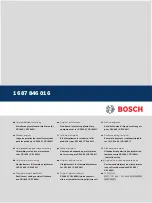
Fabric OS 5.2.x administrator guide 365
Splitting a fabric
If the connections between two fabrics are no longer available, the fabric will segment into two separate
fabrics. Each new fabric will retain the same zone configuration.
If the connections between two fabrics are replaced and no changes have been made to the zone
configuration in either of the two fabrics, then the two fabrics will merge back into one single fabric. If any
changes that cause a conflict have been made to either zone configuration, then the fabrics
might segment.
Using Zoning to administer security
Zones provide controlled access to fabric segments and establish barriers between operating
environments. They isolate systems with different uses, protecting individual systems in a heterogeneous
environment; for example, when Zoning is in secure mode, no merge operations occur.
Advanced Zoning is configured on the primary Fabric Configuration Server (FCS). The primary FCS switch
makes Zoning changes and other security-related changes. The primary FCS switch also distributes Zoning
to all other switches in the secure fabric. All existing interfaces can be used to administer Zoning
(depending on the policies; refer to the
Secure Fabric OS Administrator’s Guide
for information about
security policies).
You must perform zone management operations from the primary FCS switch using a zone management
interface, such as telnet or Advanced Web Tools. You can alter a Zoning database, provided you are
connected to the primary FCS switch.
When two secure fabrics join, the traditional Zoning merge does not occur. Instead, a Zoning database is
downloaded from the primary FCS switch of the merged secure fabric. When E_Ports are active between
two switches, the name of the FCS server and a Zoning policy set version identifier are exchanged
between the switches. If the views of the two secure fabrics are the same, the fabric’s primary FCS server
downloads the Zoning database and security policy sets to each switch in the fabric. If there is a view
conflict, the E_Ports are segmented due to incompatible security data.
As part of Zoning architecture, you must determine which of the two basic Zoning architectures (hard or
soft) works best for your fabric. With time and planning, the basic hard zone configuration works for most
sites. If a site has additional security needs, use the additional layer of Secure Fabric OS, apart from the
standard Zoning architecture.
NOTE:
Secure Fabric OS requires the activation of a security license and an Advanced Zoning license.
Resolving zone conflicts
Zone conflicts can be resolved by saving a configuration file with the
configUpload
command,
examining the Zoning information in the file, and performing a cut and paste operation so that the
configuration information matches in the fabrics being merged.
After examining the configuration file, you can choose to resolve zone conflicts by using the
cfgClear
command followed by the
cfgDisable
command on the incorrectly configured segmented fabric,
followed by a
portDisable
/
portEnable
command on one of the ISL ports that connects the fabrics.
This will cause a merge, making the fabric consistent with the correct configuration.
CAUTION:
Be careful using the
cfgClear
command, because it deletes the defined configuration.
Table 88
lists considerations for Zoning architecture.
Summary of Contents for AE370A - Brocade 4Gb SAN Switch 4/12
Page 18: ...18 ...
Page 82: ...82 Managing user accounts ...
Page 102: ...102 Configuring standard security features ...
Page 126: ...126 Maintaining configurations ...
Page 198: ...198 Routing traffic ...
Page 238: ...238 Using the FC FC routing service ...
Page 260: ...260 Administering FICON fabrics ...
Page 280: ...280 Working with diagnostic features ...
Page 332: ...332 Administering Extended Fabrics ...
Page 414: ...398 Configuring the PID format ...
Page 420: ...404 Configuring interoperability mode ...
Page 426: ...410 Understanding legacy password behaviour ...
Page 442: ...426 ...
Page 444: ......
Page 447: ......
















































